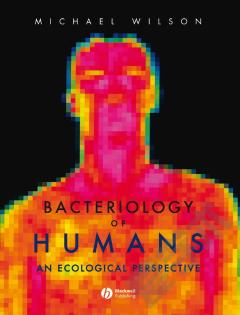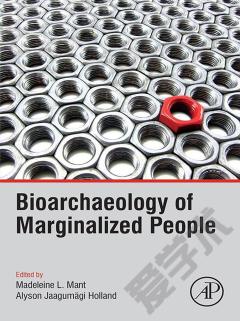Bacteriology of Humans —— An Ecological Perspective
----- 人类细菌学
Preface. Abbreviations of genera. 1. The human-microbe symbiosis . 1.1. Overview of the nature and distribution of the microbial communities inhabiting humans. 1.2. Environmental determinants that affect the distribution and composition of microbial communities. 1.3. Host characteristics that affect the indigenous microbiota. 1.4. Techniques used to characterize the microbial communities inhabiting humans. 1.5. The epithelium - site of host-microbe interactions. 1.6. Further reading. 2. The indigenous microbiota of the skin . 2.1. Anatomy and physiology of human skin. 2.2. Cutaneous antimicrobial defense systems. 2.3. Environmental determinants operating at different skin regions. 2.4. The indigenous microbiota of the skin. 2.5. Overview of the cutaneous microbiota. 2.6. Sources of data used to compile figures. 2.7. Further reading. 3 . The indigenous microbiota of the eye. 3.1. Anatomy and physiology of the eye. 3.2. Antimicrobial defense systems of the eye. 3.3. Environmental determinants on the conjunctival surface. 3.4. The indigenous microbiota of the eye. 3.5. Overview of the ocular microbiota. 3.6. Sources of data used to compile figures. 3.7. Further reading. 4. The indigenous microbiota of the respiratory tract. 4.1. Anatomy and physiology of the respiratory tract. 4.2. Antimicrobial defense systems of the respiratory tract. 4.3. Environmental determinants within the respiratory tract. 4.4. Indigenous microbiota of the respiratory tract. 4.5. Overview of the respiratory microbiota 4.6. Sources of data used to compile figures 4.7. Further reading. 5 . The indigenous microbiota of the urinary system of females . 5.1. Anatomy and physiology of the urinary system of females. 5.2. Antimicrobial defenses of the female urinary system. 5.3. Environmental determinants within the female urethra. 5.4. The indigenous microbiota of the female urethra. 5.5. Overview of the microbiota of the urinary tract of females. 5.6. Sources of data used to compile figures. 5.7. Further reading. 6 . The indigenous microbiota of the reproductive system of females . 6.1. Anatomy and physiology of the female reproductive system. 6.2. Antimicrobial defense systems of the female reproductive system. 6.3. Environmental determinants at different regions of the reproductive system. 6.4. The indigenous microbiota of the female reproductive system. 6.5. Overview of the microbiota of the female reproductive system. 6.6. Sources of data used to compile figures. 6.7. Further reading. 7. The indigenous microbiota of the urinary and reproductive systems of males. 7.1. Anatomy and physiology. 7.2. Antimicrobial defenses of the male urinary and reproductive systems. 7.3. Environmental determinants within the male urinary and reproductive systems. 7.4. The indigenous microbiota of the male urinary and reproductive systems. 7.5. Overview of the microbiota of the male urinary and reproductive systems. 7.6. Sources of data used to compile figures. 7.7. Further reading. 8 . The indigenous microbiota of the oral cavity . 8.1. Anatomy and physiology of the oral cavity. 8.2. Antimicrobial defense systems of the oral cavity. 8.3. Environmental determinants at the various sites within the oral cavity. 8.4. The indigenous microbiota of the oral cavity. 8.5. Overview of the oral microbiota. 8.6. Sources of data used to compile figures. 8.7. Further reading. 9 . The indigenous microbiota of the gastrointestinal tract . 9.1. Anatomy and physiology of the gastrointestinal tract. 9.2. Antimicrobial defense systems of the gastrointestinal tract. 9.3. Environmental determinants within different regions of the gastrointestinal tract. 9.4. The indigenous microbiota of the gastrointestinal tract. 9.5. Overview of the indigenous microbiota of the gastrointestinal tract. 9.6. Sources of data used to compile figures. 9.7. Further reading. 10 . The future . 10.1. Further reading. Index
{{comment.content}}








 京公网安备 11010802027623号
京公网安备 11010802027623号